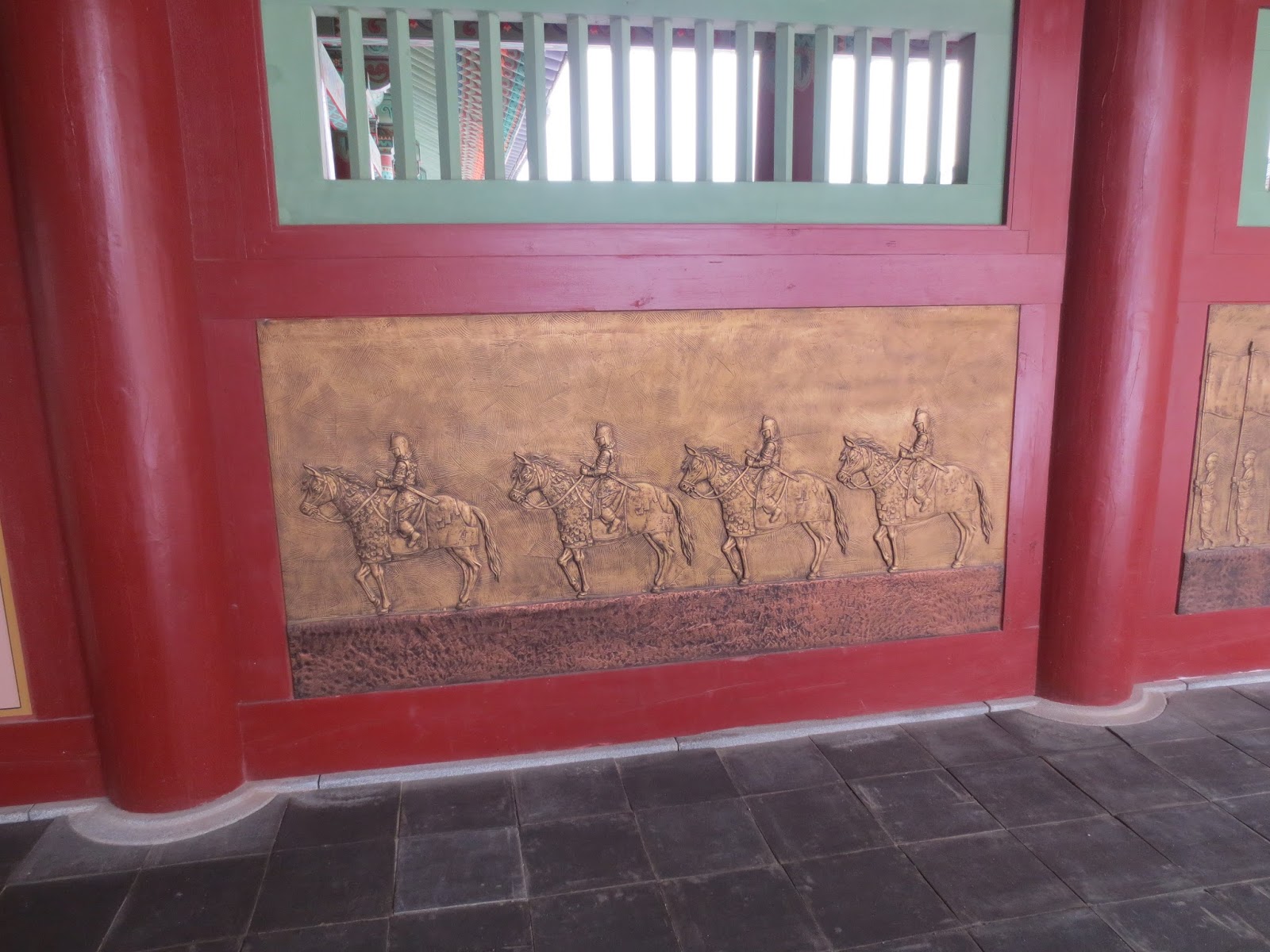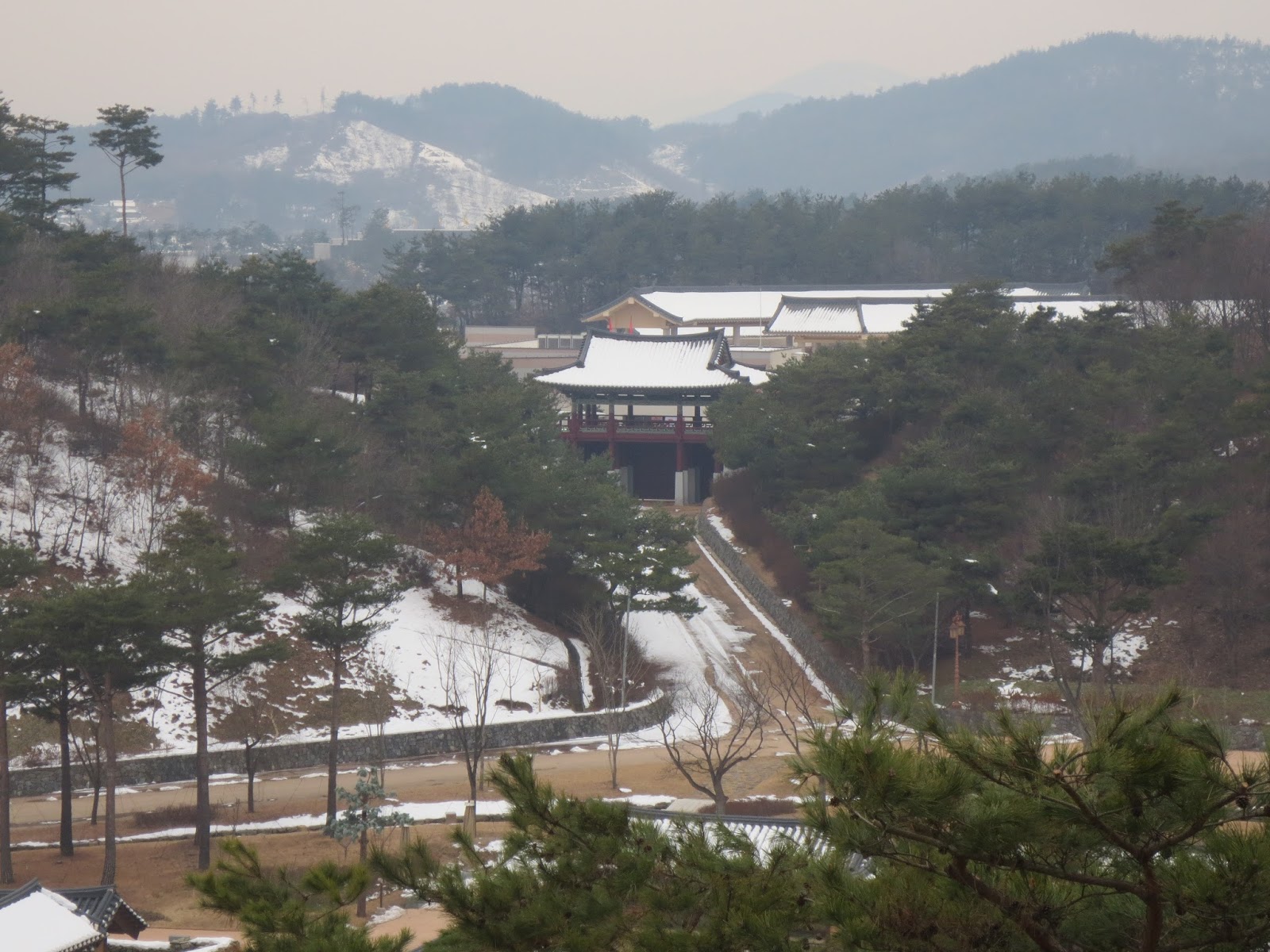Baekje was one of the Three Kingdoms in Korea's ancient history. Founded in 10 BC by King Onjo, Baekje has recorded history beginning in 18 BC until 660 AD. The Baekje Kingdom occupied much of the west coast of Korea (closest to China) and had relationships with China and Japan. It is credited with bringing Buddhism to Japan from China, in addition to advanced pottery techniques and the Chinese writing system. Chinese writing was used in Korea until the creation of their own written language in the 1400s.
The entrance to the park was beautiful with lots of granite statues. It was very cold this day.
That is our friend Lance on the right and his mom on the left. She was visiting from Alaska, so the weather was pretty normal for her.
 I know, if you've seen one palace, you've seen them all, but they are truly stunning, if not in my poor excuse for photography, certainly in their presence.
I know, if you've seen one palace, you've seen them all, but they are truly stunning, if not in my poor excuse for photography, certainly in their presence. |
| The King's wardrobe for important events. Each piece and embroidered item has special significance. |
 |
| The king's daily wear is not as ornate, of course. |
It says, "It was excavated from site of making garden in the Baekje Historical Museum. Inside of chamber has hexagonal structure and it was built using broken stones. It has 240 cm length, 96 cm width and 78 cm height."
Naturally, when I saw the observation tower at the top of a hill, I had to go up and see what I could see. Bill followed as only a good husband will do. He hates climbing because he can never tell just how far you have to go before you get to the good stuff. This climb wasn't too bad, and the views were nice.
This is the common man's area or the village. It was surrounded by the city wall, and the various skilled laborers each had their own building.
This was quite a beautiful area, and luckily for us, it was right next door to a shopping outlet! We walked over and had some coffee and did a few minutes shopping. The older folks (Bill and Lance's mom:)) were ready to hit the road, but Tracey (Lance's wife) and I had other ideas. We hit a few stores and admired the Christmas decorations (this was in December 2014) before heading home.




















No comments:
Post a Comment